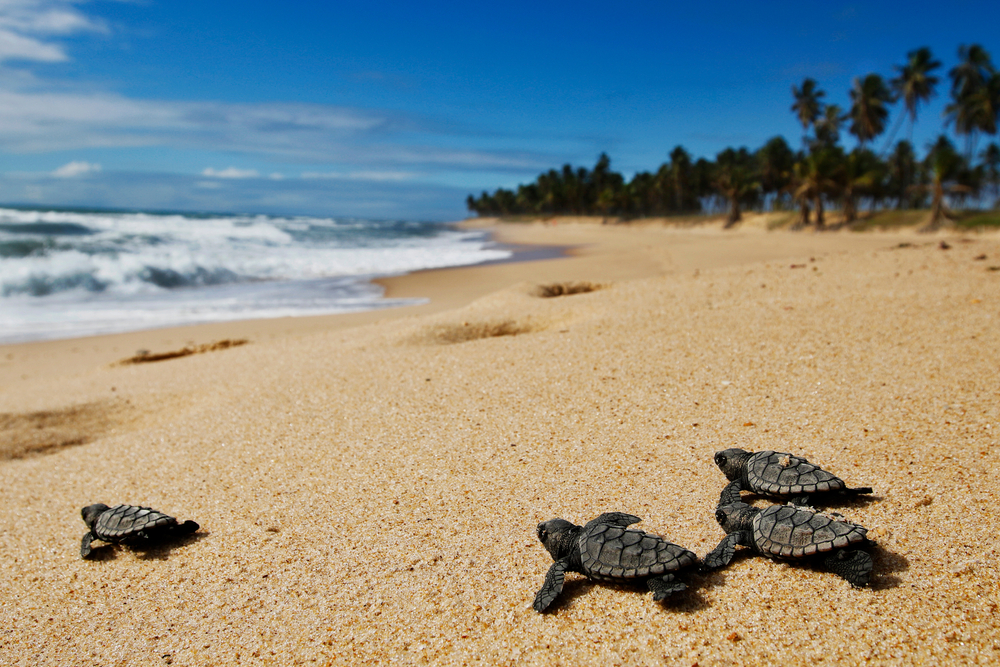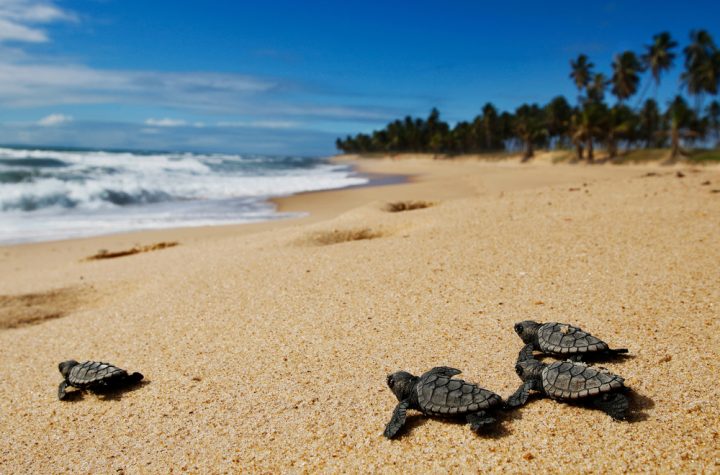Turtles have been nesting on Earth’s beaches for millions of years, but the changing climate is increasingly threatening these nesting sites. Rising sea levels, temperature fluctuations, and severe weather events are making it harder for turtles to find safe, suitable locations to lay their eggs. As climate change accelerates, the impacts on turtle populations are becoming more evident, leading conservationists to raise alarms about the future of these ancient reptiles.
In this article, we will explore the climate change impact on turtles, particularly focusing on how it affects their nesting behaviors and the broader consequences for their survival.
Rising Temperatures and Hatchling Sex Ratios
One of the most direct ways climate change affects turtle nesting sites is through temperature changes. Sea turtles, like many reptiles, have temperature-dependent sex determination. This means that the temperature of the sand where the eggs are incubated determines whether the hatchlings will be male or female.
- High Temperatures Lead to More Females: Warmer sand temperatures tend to produce more female hatchlings, while cooler temperatures produce males. As global temperatures rise, many nesting sites are experiencing higher-than-normal sand temperatures. This imbalance can lead to skewed sex ratios, with many more females than males being born. Over time, this could cause difficulties in reproduction, threatening the long-term sustainability of turtle populations.
- Survival Rates of Hatchlings: In addition to influencing sex ratios, rising temperatures can negatively impact the survival rates of turtle embryos. If the sand becomes too hot, the embryos may fail to develop, leading to fewer hatchlings overall. This issue, compounded by other climate-related threats, could drastically reduce turtle populations in the future.
Sea Level Rise and Loss of Nesting Habitats
Global sea levels are rising due to melting ice caps and the thermal expansion of water. This phenomenon is particularly damaging to turtle nesting habitats, many of which are located on low-lying coastal areas. As beaches erode or become submerged, turtles lose the areas they rely on to lay their eggs.
- Beach Erosion: Coastal erosion is washing away prime nesting sites, forcing turtles to find alternative locations. Unfortunately, many of these alternative sites may be unsuitable due to increased human activity, higher risks of predation, or suboptimal environmental conditions. Without stable nesting grounds, turtles face difficulties in successfully reproducing.
- Increased Nest Flooding: Rising sea levels also increase the likelihood of nests being flooded. When turtle nests are submerged by seawater, the eggs often drown, leading to a significant loss of hatchlings. This is particularly concerning for species like the loggerhead turtle, which already faces numerous conservation challenges.
Extreme Weather Events and Nesting Disruptions
Climate change is causing an increase in the frequency and severity of extreme weather events such as hurricanes, tropical storms, and heavy rainfall. These events can severely disrupt turtle nesting activities and destroy nests.
- Storms Washing Away Nests: High winds, waves, and storm surges associated with hurricanes and tropical storms can wash away entire nesting beaches, destroying the nests and killing the eggs inside. Even if a storm does not directly hit a nesting site, the increased rainfall can saturate the sand, suffocating the developing embryos.
- Disorientation of Hatchlings: In some cases, storms can alter the landscape so drastically that hatchlings become disoriented when emerging from the nest. Instead of heading toward the ocean, they may head inland or become trapped in debris, increasing their chances of predation or dehydration.
The Broader Ecological Impact
The challenges facing turtle nesting sites are not just a concern for turtles themselves; they also have broader implications for the ecosystems they inhabit. Turtles play important roles in marine and coastal ecosystems, and their decline could lead to negative ripple effects.
- Seagrass Bed Maintenance: Many turtle species, like green sea turtles, feed on seagrass. By grazing on seagrass beds, they help keep these underwater meadows healthy, promoting biodiversity and preventing overgrowth. A decline in turtle populations could lead to unhealthy seagrass beds, which could have cascading effects on marine life.
- Coral Reef Health: Hawksbill turtles, in particular, play a vital role in maintaining coral reef health by feeding on sponges that compete with corals for space. A decrease in hawksbill turtle populations due to climate change could lead to less healthy coral reefs, which are already under threat from rising ocean temperatures and acidification.
Conservation Efforts to Protect Turtle Nesting Sites
Efforts to protect turtle nesting sites are gaining momentum as the impacts of climate change become more apparent. Conservationists, governments, and organizations are working together to mitigate the effects of climate change on these vulnerable species.
- Beach Protection and Restoration: Some conservation groups are focusing on restoring and protecting turtle nesting beaches. This involves removing debris, planting vegetation to prevent erosion, and creating protected areas where human activity is restricted. In some cases, artificial nesting sites are being developed to provide turtles with safe areas to lay their eggs.
- Temperature Management: To address the issue of rising sand temperatures, some conservationists are using shading techniques to cool the sand at key nesting sites. This can help create a more balanced sex ratio among hatchlings. In addition, efforts to relocate nests to cooler areas or incubate eggs in controlled environments are helping ensure the survival of future generations.
- Climate Action: Ultimately, tackling climate change on a global scale is crucial for the survival of turtle populations. Reducing greenhouse gas emissions, promoting renewable energy, and implementing policies to mitigate the effects of climate change are necessary steps to protect not only turtles but also the ecosystems they rely on.
Conclusion
The climate change impact on turtles is a growing concern that requires immediate attention. Rising temperatures, sea level rise, and extreme weather events are threatening the future of turtle populations by disrupting their nesting sites and reproductive processes. Conservation efforts are critical in addressing these challenges, but long-term solutions will require global action to combat climate change. Protecting turtles and their habitats is essential not only for the survival of these ancient creatures but also for the health of the ecosystems they inhabit.

“Certified tv guru. Reader. Professional writer. Avid introvert. Extreme pop culture buff.”







More Stories
NightCafe Review and Tutorial (October 2024)
Report: The Menendez brothers may be released from prison before Christmas
This stunning photo of an ant's face looks like something out of a nightmare: ScienceAlert